‘It’s now or never’: The untold story of the dramatic, Canadian-led rescue of Syria’s White Helmets
It started with a frantic call to Canada’s ambassador to Jordan, writes Terry Glavin. How the escape unfolded—and the wrenching truth about those left behind
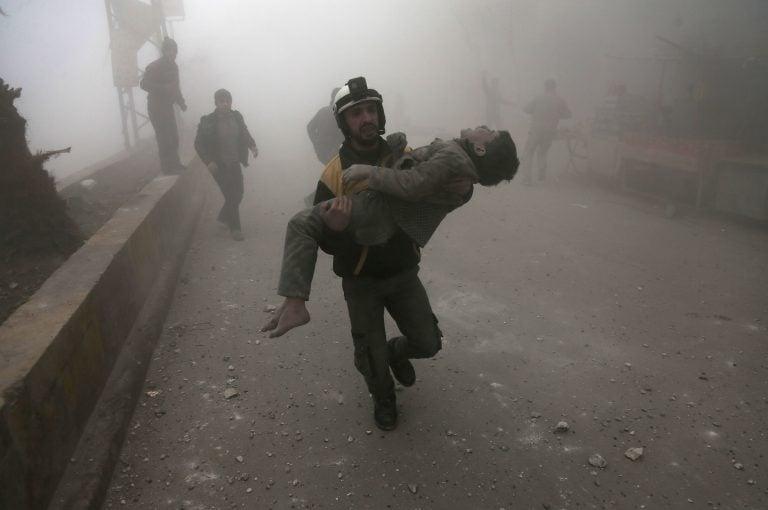
A White Helmet carries a wounded boy he’d helped dig out of the rubble following a January air strike on Hamouria, Syria (Abdulmonam Eassa/AFP/Getty Images)
Share
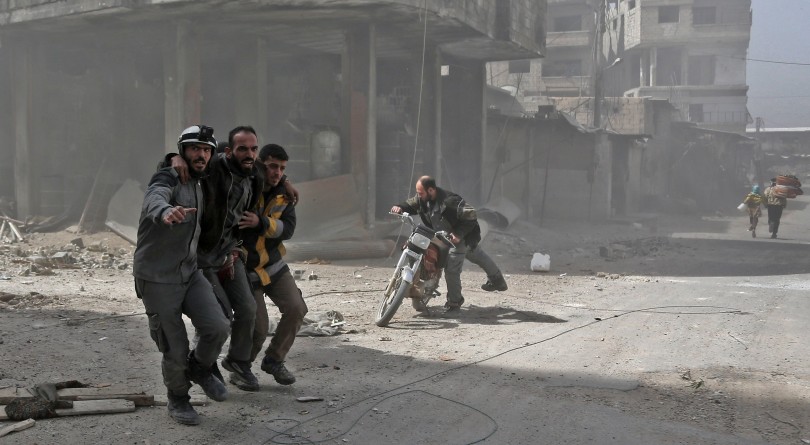
It started with a telephone call, just before the Canada Day weekend. It was Nadera Al-Sukkar from Mayday Rescue, the British-based foundation that serves as the Syria Civil Defence White Helmets’ administrative agency in Jordan. “She sounded really scared,” is the way Peter MacDougall, Canada’s ambassador to Jordan, remembers the call. Al-Sukkar wasn’t the type of person who scared easily. “She’s usually really impressive, but really low key.”
The way Al-Sukkar remembers it, the situation was desperate, and calling MacDougall was a long shot. Hundreds of thousands of civilians were streaming out of the towns and cities of Dara’a and Quneitra, Syria’s southern governorates. Medical clinics were being targeted and bombed. The White Helmets—Syria’s famous civilian emergency first responders—were in Bashar al-Assad’s crosshairs again, just as they had been in the hellholes of Aleppo, Douma, Ghouta and Homs.
It had been almost a year to the day since U.S. President Donald Trump, Jordan’s King Hussein and Russia’s Vladimir Putin had signed a “de-escalation agreement” covering Syria’s southern governorates, and Trump had walked away from it, giving Assad and the Russians a green light to do as they pleased.
Owing to their successes in meticulously documenting the war crimes that have turned Syria into such a human abattoir over the past seven years, Syria Civil Defence (SCD) volunteers have become prime targets. The Assad regime and its supporters in Moscow have been running an elaborate disinformation campaign in the NATO capitals, depicting the White Helmets as terrorists, as collaborators with al-Qaeda and occasionally as agents of Israeli or American imperialism.
Assad’s forces were rapidly advancing, backed by Russian troops, Iran’s Quds Force and the Iranian proxy Hezbollah. Notable in those advancing columns was the Syrian Arab Army’s elite Qawat Al-Nimr division, a special forces unit directly implicated in numerous war crimes and atrocities including beheadings, the summary execution of captives and the public mutilation of corpses. The skies were growing dark with Russian bombers. The White Helmets had every reason to fear for their lives.
RELATED: Rescuing Syria’s ‘White Helmets’ was the least the world could do
In Amman, Mayday Rescue was canvassing its options. Assad’s forces had swept quickly along the Jordanian border, which was already closed on the Jordanian side. An evacuation route through the Syrian Desert to Iraq was considered, but it was impassable. “It just happened too fast,” Al-Sukkar told me. “We had thought maybe through Iraq, maybe through Jordan. But it was too dangerous to try it.”
While many White Helmets volunteers had vowed to stay on despite the dangers, hundreds had declared to Al-Sukkar that they were afraid they were going to be tracked down and killed. So Al-Sukkar called MacDougall.
Under the cover of darkness three weeks later, in the culmination of a highly secret operation—and just as Syria’s southwestern governorates were being wholly overrun by Assad’s troops and Russian soldiers—106 White Helmets and more than 300 of their family members crossed into the Israeli-held Golan Heights. From there, they were put on buses and transported to a “high-security location” in Jordan, where they were to await resettlement in Canada, Britain, Germany, France and Sweden.
In the otherwise gruesome saga of Syria’s continuing descent into a bloody maelstrom of war crimes, crimes against humanity and barbarism, the sensational nighttime rescue was that rarest of events—a “good news” story. The White Helmets organization was a runner-up for the Nobel Peace Prize last year. Credited with saving tens of thousands of Syrian lives, roughly 200 SCD volunteers have died in the course of their rescue work. And the deliverance of so many of the White Helmets on the Golan Heights that weekend was made possible by a bold and principled behind-the-scenes Canadian intervention on the world stage.
The outlines of that account are true enough. But there is a darker, unreported story, detailed to Maclean’s by sources in the region with close knowledge of events, that can be seen in the unravelling of a troubling discrepancy between two numbers: the publicly declared number of SCD volunteers extricated over the weekend of July 21-22, and the number of volunteers the SCD had hoped to rescue from the carnage in Syria’s southern governorates that weekend.
RELATED: Syria’s once-promising revolution lurches toward a horrific end in Idlib
The way the story has been told, the 422 SCD workers and their family members who made it out on the night of July 21 and the early hours of July 22 represent between a third and half of the people who were initially intended to be rescued.
In fact, the 106 rescued SCD volunteers (not 98, as publicly reported) comprise less than a seventh of the roughly 750 volunteers whose names appear on a list the Syria Civil Defence organization submitted to Israeli and Jordanian authorities as Dara’a and Quneitra were collapsing into chaos and savagery.
What has not been told is the story of the volunteers who were left behind, and why.
Until now, that story has been practically impossible to tell. That’s partly because the volunteers who were rescued were immediately taken by bus to Jordan and confined at that secret “high-security location” in the Jordanian desert, and their cellular telephones were confiscated.
The undisclosed location, Maclean’s can now report, is “Village 2,” a section within the high-security Camp Azraq, a refugee complex administered jointly by the United Nations and the Jordanian government about 100 km east of the Jordanian capital, Amman. Initially, the SCD volunteers were instructed to avoid mixing with any of the other refugees at the camp, ostensibly to avoid contact with any potentially hostile factions, but word ended up getting out and the Jordanian authorities’ professed concerns proved groundless.
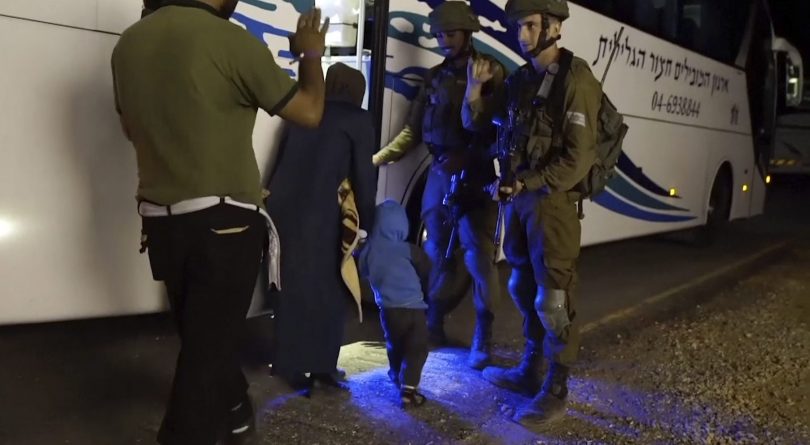
It hasn’t helped that King Abdullah’s government, hypersensitive to any further publicity about its co-operation with what Jordan’s Arab neighbours call “the Zionist entity,” refuses to allow journalists access to the White Helmets evacuees, even after they’re discharged from Camp Azraq.
Over the past two weeks, more than 100 people from the July 21-22 rescue operation—SCD volunteers and their family members—have been quietly flown out of Jordan by the International Organization for Migration, arriving in Sweden, the United Kingdom and France. They were escorted under guard from Camp Azraq directly to Queen Alia International Airport in Amman.
The rest, including 26 Canada-bound SCD volunteers and 84 of their family members, are still being held incommunicado at Camp Azraq. Global Affairs Canada, Immigration and Citizenship Canada and the UN Refugee Agency had already identified them as suitable for resettlement in Canada, based on the biographical details in the SCD’s initial list—even before they reached the Golan Heights July 21-22. Over the next three weeks, they are expected to arrive in Toronto, Vancouver, Ottawa and Halifax. After obtaining exit visas from the Jordanian ministry of foreign affairs, most are expected to be issued “blended” Canadian visas—combining private and government refugee sponsorship.
What Maclean’s can also report now is that of the 750 volunteers the SCD’s southern offices in Amman had identified as being in desperate need of rescue, at least 80 had their names struck from the SCD’s list in a “pre-screening” exercise undertaken by Israel’s Mossad and Jordan’s General Intelligence Directorate. They were barred on tenuous grounds that certain of their family members were believed to be associated with Syrian terrorist groups. A relation who may or may not have associated with an extremist group—or even an armed pro-democracy one—was enough to get one disqualified.
One SCD volunteer whose name had been struck from the list made it to an Israeli border post on the Golan Heights on the night of July 21—only to be turned away. On the plus side, another two individuals were struck from the rescue list during the pre-screening because they were credibly assessed by Israeli and Jordanian intelligence to be Assad regime spies who had infiltrated the White Helmets organization.
Among those on the list who passed the Israeli-Jordanian pre-screening was a large group that was intended to be picked up at a collection point on the Golan Heights—there were initially three staging sites—that had to be abandoned. The site was in a frontier area that fell on the night of July 19 to the Khalid ibn al-Walid Army, a notorious conglomerate of Salafi jihadist militias, mostly affiliated with the Islamic State of Iraq and the Levant.
In that group were 105 SCD volunteers now known to have been permitted by the Assad regime to join tens of thousands of people evacuated from Dara’a and Quneitra to Idlib, a northern governorate. Over the past two years, 1.5 million Syrians have been herded into Idlib, doubling the population, in a sequence of temporary truces and relocation agreements negotiated after Assad’s barrel bombers and the Russian air force had devastated rebel-held areas.
“They had to sign documents that they were terrorists and they wished to be removed to another area,” Al-Sukkar told me. Since the July 21-22 operation, at least 16 White Helmets workers who signed similar documents in Homs, Central Syria, have disappeared after being picked up by the Mukhabarat, Assad’s secret police.
At least 320 volunteers on the SCD list who had pleaded for rescue never made it anywhere near the Golan Heights. They were stuck in areas under strict curfew, mostly in eastern Dara’a. They continue the first-responder and mobile-clinic work they were doing before Assad’s forces regained control of Dara’a, where Syria’s now-crushed democratic uprising began seven years ago. Now, however, they are without outside help, unaffiliated with the SCD and they do not wear the White Helmets’ trademark insignia.
Another 70 volunteers who were on their way to the Golan Heights were stranded on the far side of the north-south highway between Damascus and the Jordanian border. The Russian military command, which had deployed checkpoints the length of the highway, let it be known that they considered the White Helmets “vermin” and would not permit them to cross.
Little is known of the whereabouts of the final 75 or so volunteers on the initial evacuation list. In all likelihood, they have returned to their previous work, formally or informally. There are about 3,200 SCD workers still active in Syria, working mostly in the northern pockets of the country where the Assad regime still has no sway. They work not only as war medics and disaster-relief crews but as ambulance drivers, firefighters and public-health nurses.
Among the 422 SCD volunteers and their family members evacuated to Camp Azraq, 225 were children—one was an infant, born to a woman in a field the night before crossing through the Israeli checkpoints on the Golan Heights. Within the SCD group, five babies have been born at Azraq. Four are healthy. One died of heart failure.
***
Among the Canada-bound SCD volunteers, one stands out. Her name is Maysoon Al-Masri. She was the very first female volunteer with the White Helmets. Formerly a high-profile Syrian journalist, Al-Masri joined the White Helmets in 2013 when her younger brother was killed by an Assad-regime sniper. She went on to become director of the SCD’s operations in Dara’a City and head of the SCD’s women’s affairs department.
Al-Masri and the other Canada-bound SCD workers are expected to begin arriving over the next three weeks. Almost all of them have now completed the usual UN Refugee Agency interviews, the refugee “vetting” procedures undertaken by the Canadian Border Security Agency and the Canadian Security Intelligence Service, the orientation sessions letting them know what to expect when they arrive in Canada, and so on.
Several of the rescued SCD families have already been flown to France and Sweden, while Britain has reportedly granted asylum to 29 SCD volunteers and roughly 70 family members, who will be arriving in the United Kingdom in the coming weeks. On Monday, British Foreign Secretary Jeremy Hunt announced that the Syrians would be settled under the U.K.’s Vulnerable Persons Resettlement Scheme.
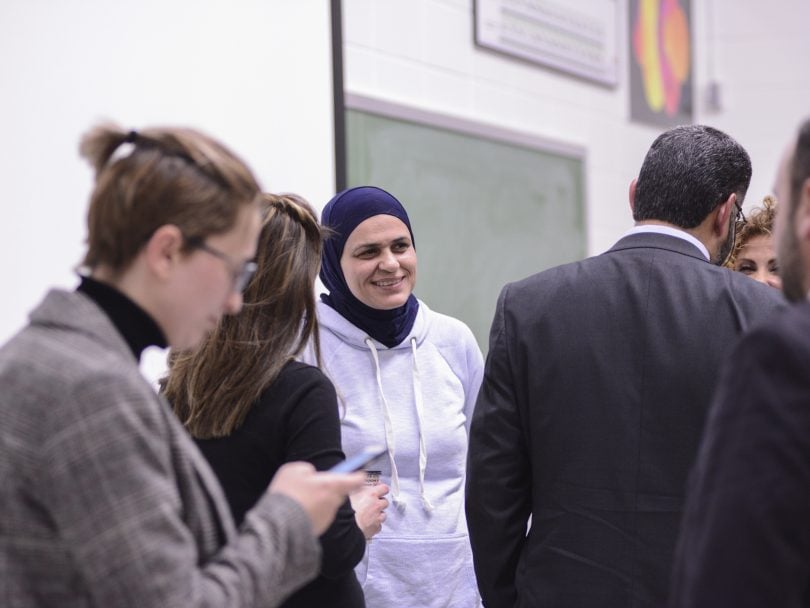
Most of the Canada-bound SCD workers are being resettled here because they already have at least some links to this country, usually relatives. Al-Masri is well known in Syrian-Canadian circles and in the refugee-support community. She toured Canada this past spring, and the SCD women’s department she heads up has benefited from funding provided by Global Affairs Canada—$7.5 million over the past two years—aimed largely at helping the SCD organization recruit and train more women.
Al-Masri is also well known in Syrian opposition circles—by the name Sarah Al-Hourani. She adopted the pseudonym to work as an independent journalist after leaving the senior post she held with the Syrian Arab News Agency, a regime-controlled media organization, shortly after Syria’s democratic uprising erupted in Al-Masri’s hometown of Dara’a in 2011.
It was when her brother was shot and killed in 2013, however, that Al-Masri decided that independent journalism wasn’t enough. In her SCD work, she doubled as a so-called “digital first responder” in a project led by a Canadian NGO, the SecDev Foundation. In a March conversation with a SecDev Foundation interviewer, Al-Masri (speaking as “Sarah Al-Hourani”) explained how her brother’s death convinced her to join the White Helmets: “We all stood there watching him without being able to do anything to save his life, because of the sniper and not having the emergency-response skills. In order to overcome my guilt and to be able to help save lives, I joined the White Helmets.”
Al-Masri’s work—part first responder, part evidence-gathering journalist—made her a prime, high-profile target of the Assad regime. She recently married the Syrian journalist Ma’en Alaboud, who escaped with her to the Israeli-held Golan Heights on the weekend of July 21-22.
***
It was an escape that almost never happened.
In between Al-Sukkar’s telephone call to MacDougall and the weekend of July 21-22, there were several near misses and two major panics. Three days after Al-Sukkar’s call, the legions of trudging civilians fleeing into the desert had swollen to 300,000 people. The Russian air force was pounding the towns and cities, carrying out 600 air strikes in a single 15-hour period on July 4. Then the rebel groups started surrendering in exchange for the promise of safe passage to the northern governorate of Idlib.
On July 19, The White Helmets’ office in Jordan got a call from the Israelis. “They gave us three hours’ notice,” Al-Sukkar remembers. “But when we started contacting people in the field, we knew that it was not going to work. So we cancelled. We thought we would never get another chance, that it wasn’t going to happen at all.”
Then a rumour spread through the mayhem that Canada was offering to evacuate all of the White Helmets in the region. Other humanitarian groups started calling the SCD organization, asking if there was any way their workers could escape, too. “That really worked against us,” Al-Sukkar said. “It was all supposed to be a secret.”
Evening had already fallen on July 21 when the Israelis called again. “You will never have another chance,” the Israeli Defence Forces (IDF) officer said. “It’s now or never.”
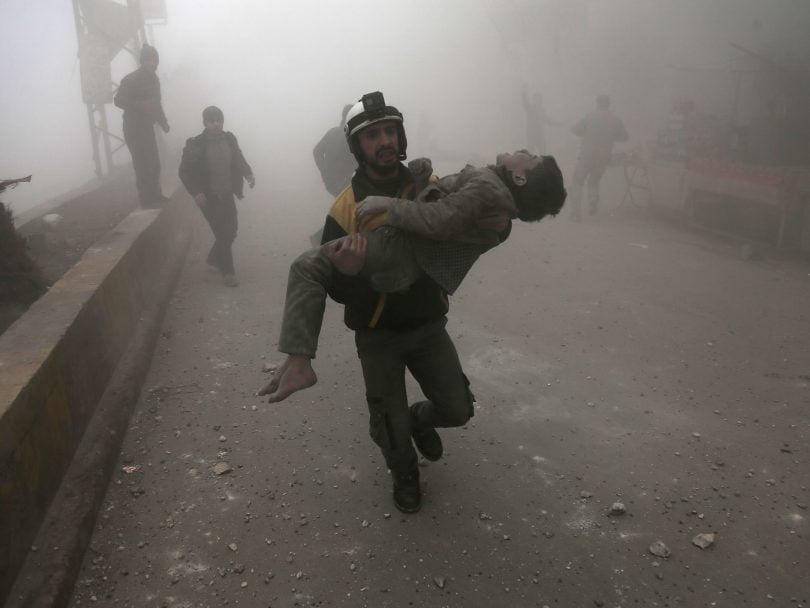
It was no exaggeration. Within seven days of the rescue, Assad’s forces had recaptured the Golan Heights’ entire frontier with Israel for the first time since Syria’s democratic rebellion had taken off in 2011. Three days after that, an Israeli facility on the border, the Mazor Ladach clinic, ceased operations. The clinic had served as a triage centre for wounded and sick Syrians, providing treatment to some 6,800 patients by the time it was shut down.
The Golan border was sealed.
Two weeks ago, the IDF’s “Good Neighbour” project officially came to a close. During its five years of operation, nearly 5,000 Syrians had been transported through the IDF’s checkpoints for treatment in Israeli hospitals. Israel had provided small arms and supplies to Free Syrian Army rebel commanders on the Quneitra side of the Golan Heights, and the IDF had overseen the dispersal of hundreds of tons of humanitarian aid to Syrians though Israel’s Golan Heights checkpoints. In the hours after the White Helmets passed through, Israel is reported to have allowed a handful of Syrian rebel commanders and their families through, too.
But then it was over. Even the small rebel zone captured by the Salafi jihadist Khalid ibn al-Walid Army was taken by Assad’s forces July 31. Now that the Syrian regime has moved back in, there is no “good neighbour” left on the Syrian side of the frontier.
It is fair to say that Foreign Affairs Minister Chrystia Freeland’s determined leadership and the hard work of senior Canadian diplomats in Istanbul and Ottawa were key factors behind the dramatic rescue operation. Freeland marshalled the support of several NATO allies on the sidelines of the July 11-12 NATO meetings in Brussels and won their commitment to join Canada in resettling SCD evacuees.
RELATED: Canada’s admirable, doomed effort to save the world order
The Jordanians agreed to take the SCD volunteers, but only temporarily—Jordan had already taken in more than a million of Syria’s five million refugees. Britain’s Theresa May was firmly on side. Prime Minister Justin Trudeau called U.S. President Donald Trump, and Israeli Prime Minister Benjamin Netanyahu got Trump’s blessing for the IDF’s part in the drama (though the United States is notably absent from the list of countries taking in White Helmets).
But it all started with that one phone call from Nadera Al-Sukkar to Peter MacDougall, Canada’s ambassador in Amman.
“This was a wonderful, heartwarming example of countries working together to achieve a really positive outcome. Canada, Jordan, the U.K., Germany, Israel and then the United States, quite frankly, all working toward a common goal of saving these people,” MacDougall told me. “It’s the kind of thing we need to see happening more—people working together to end the Syrian war. This is not ending the war, but it’s a small collective action that Canada should be proud to have been a part of.
“It’s something we did right. And maybe it demonstrates that we should be seizing more of these opportunities, whenever we can.”